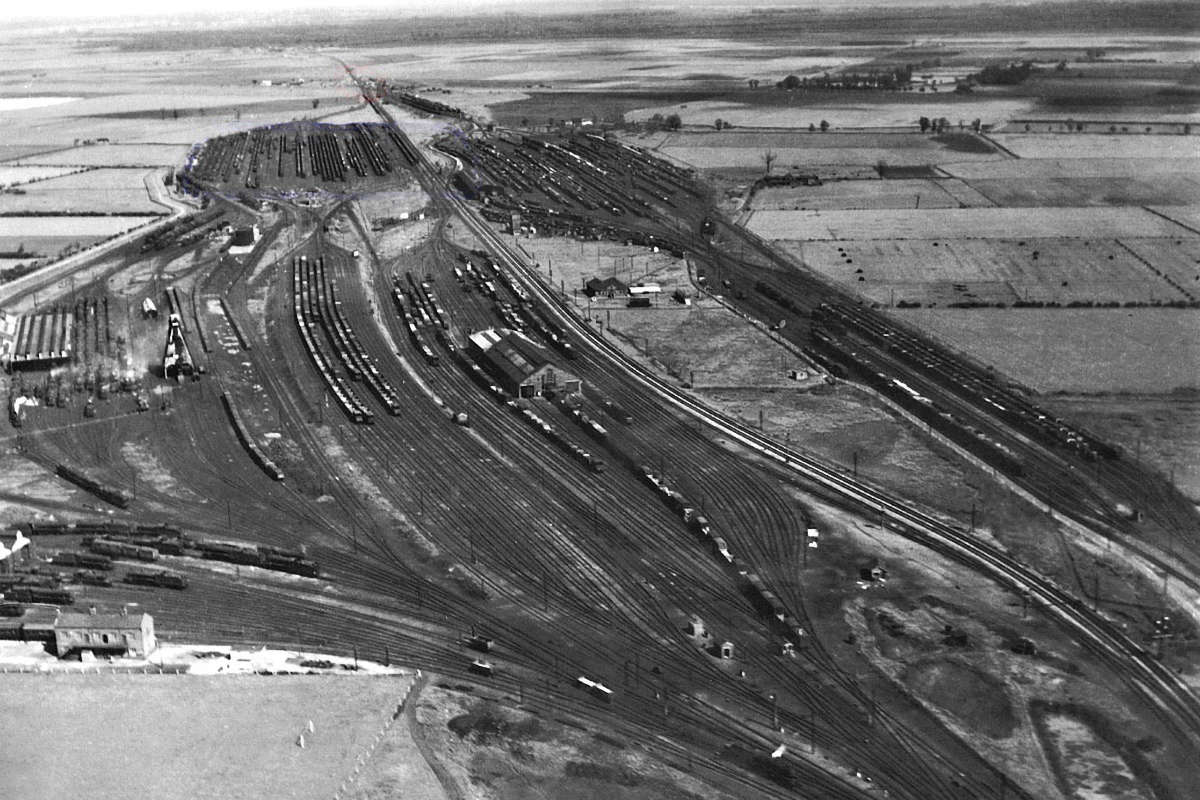9th January 2024 “March and its Railways” by Richard Munns

For our first meeting of 2024 we were delighted to welcome Richard Munns, former chairman of the March Museum and son of a March driver, to talk to us about March and its railways.
Richard opened by describing the many early railway companies operating in the area in the eighteenth century, culminating in the formation of the Great Eastern Railway in 1862. The original yards at March were located to the East of the station, but in 1867 new sidings were laid on Norwood Common (from which Norwood Yard takes its name), coinciding with the opening of the Spalding line in that same year. We saw a variety of early views, including horse shunting in the Joint Line platforms, the 1885 Station Master’s house and a lovely 1935-view of an immaculate J71 No. 8232 on shed.
The growth in railway operations in March following the formation of the LNER was then the subject of Richards’s attention, beginning with the opening of the new Up Yard in March 1929. This ultimately comprised three sections: ten Reception sidings, forty Main Yard sidings (with a capacity of 3311 wagons) and subsequently ten Departure sidings added in the 1940s. Richard described the details of hump shunting methods employed in the yard, including the use of ‘Cut Cards’ to detail how every arriving train the Reception sidings had been uncoupled into different numbers of wagons according to destination, the communication of these cut cards by pneumatic tube to the Control Tower, the programming of the settings of the top seven points in the Main Yard to change automatically with the passing wagons, the three position semaphore signals used to control hump shunting engines and the distinctive S1 0-8-4 ‘Wath Daisy’ tank locomotives originally used for hump shunting. Richard then gave a similar account of the Down Yard, opened around three years after the Up Yard.
In parallel with the opening of the new Up Yards, Richard illustrated the new locomotive depot built to handle the circa 200 locomotives required by the new goods operations, and its large coaling tower capable of loading five tons of coal into a tender in just a few seconds. The whole infrastructure at March was powered by two large Lancashire boilers, from which steam was raised to power electrical generators.
The fortunes of the railway then began to change in the 1960s with declining rail traffic and the progressive introduction of fully-fitted air braked block trains requiring no marshalling en-route. These changes led to the closure of the Down hump in 1974 and the Up hump in 1980. Richard illustrated an example of the new type of freight train with the Wisbech to Deanside pet food train.
Following complete closure of the Yards with the end of Speedlink in the early 90s, an upturn occurred in the early 2000s when Network Rail vacated Temple Mills and chose the former Down sidings at Whitemoor as their new location. Richard took us through the early scenes of the Yard’s very rapid creation, from November 2003 to Jun 2004, including the presence of the Nene Valley Railway’s Class 14 and the naming of 66701 ‘Whitemoor’. We saw various views of Phases 1 and 2 of the project, concluding with contemporary scenes showing the importance, once again, of Whitemoor on the national rail network.
The meeting closed at 9.27 with great appreciation from all present for Richard’s detailed coverage of a remarkable part of our local railway history.
